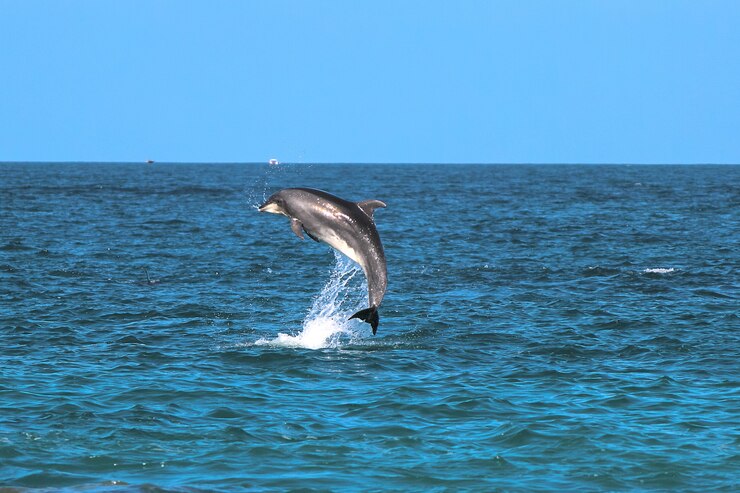Table of Contents
ToggleIntroduction
Dolphins captivate us with their intelligence and grace, but have you ever heard of a dolphin with a horn? Enter the mystical narwhal, often dubbed the “unicorn of the sea.” This article explores the enigmatic creature, delving into its characteristics, mythology, habitat, conservation status, and more.
What is a Dolphin with a Horn?
Characteristics of the Narwhal
The narwhal, Monodon monoceros, is a medium-sized toothed whale renowned for its long, spiraled tusk protruding from its upper jaw. Found predominantly in Arctic waters, this species possesses unique physical traits, including a mottled gray skin tone and a prominent helical tusk, which can grow up to ten feet long.
Mythology and Cultural Significance
Mythological References
Throughout history, the narwhal’s tusk has sparked various legends and folklore. Some cultures believed it to be the horn of the mythical unicorn, attributing magical properties to the tusk. This mystical association contributed to the narwhal’s allure and cultural significance.
Habitat and Behavior
The narwhal’s habitat primarily consists of icy Arctic waters, where it navigates through cracks in the sea ice. Known for their social behavior, narwhals travel in pods and display intricate communication patterns using clicks and whistles.
Evolutionary Biology
Adaptations and Features
Scientists marvel at the evolutionary adaptations of narwhals, particularly their elongated tusks. While the exact function of the tusk remains a subject of debate, hypotheses range from sensory perception to social hierarchies and hunting strategies.
Similarities and Differences
Compared with Other Marine Species
Contrary to popular belief, the narwhal is not the only marine creature with a protruding tusk. Contrasts and comparisons with other species, such as the beluga whale, shed light on the uniqueness of the narwhal’s characteristics.
Conservation Status
Threats and Protection Efforts
Despite its mystical allure, the narwhal faces threats from climate change, habitat loss, and human activities like hunting and pollution. Conservation initiatives aim to protect these creatures, emphasizing the importance of preserving their fragile Arctic habitat.
Human Interaction
Interaction and Impact
Human interaction, ranging from traditional hunting by indigenous communities to modern industrial activities, significantly impacts narwhal populations. Understanding these interactions is crucial for sustainable coexistence.
Role in the Ecosystem
The narwhal plays a vital role in the Arctic ecosystem, influencing prey populations and contributing to the overall balance of the marine environment.
Conclusion
Intriguing and mysterious, the narwhal with its horn has mesmerized cultures worldwide. Understanding and safeguarding these majestic creatures are pivotal for preserving our planet’s biodiversity and natural wonders.
FAQs
1: Is the horn of a dolphin an actual horn?
The narwhal’s tusk is a specialized tooth, not an actual horn. It’s an elongated tooth that grows through the upper lip of male narwhals. While its precise function remains a scientific mystery, it’s believed to have multiple roles, including sensory perception and social signaling.
2: Do female narwhals have tusks?
Generally, female narwhals do not have tusks. Occasionally, some may develop smaller, less pronounced tusks, but these occurrences are rare compared to the prominent tusks found in males.
3: How do narwhals use their tusks?
While there isn’t a definitive answer, researchers speculate that narwhals use their tusks for various purposes, including finding food, communicating, and navigating their Arctic environment.
4: Are narwhals endangered?
The narwhal is currently classified as “near threatened” by the IUCN. Climate change and human activities threaten their habitat and survival, warranting conservation efforts.
5: Can narwhals survive in captivity?
Narwhals are notoriously challenging to keep in captivity due to their specialized needs and habitat requirements. Thus, there are no recorded instances of narwhals surviving long-term in captivity.





